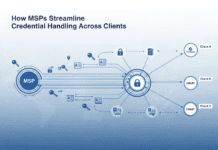Over time, business risks have become very complex, especially in the wake of today’s fast and interlinked world. Companies have to deal with all sorts of unforeseen challenges, from natural calamities to supply line disruptions worldwide.
That is where SCRM, a strategic approach to identifying, accessing, and mitigating various risks that can hamper a company’s supply chain, steps in.
However, an effectively structured SCRM plan is not gained by the mere decision. It requires in-depth planning with and among departments and the promise of always developing.
In this article, we will share five practical how-to tips for building a resilient SCRM plan that can keep your business up and running, come what may.

Tip 1: Do a Risk Assessment
Building a resilient plan for SCRM must start with an understanding of the magnitude of the risk that surrounds a business. This goes deeper down the supply chain to identify possible vulnerabilities, which may range from natural calamities and political instability to supplier failure and cyber attacks.
Model the whole supply chain backward, up to raw materials, and then assess the potential likelihood and impact of the different risk scenarios in each process step. In doing so, you will be better placed to accord priority to those risks most likely to bring the worst hazard to your operations first.
Lead time needs to be considered, along with single points of failure and criticality of the supplier or component. In fact, the more thoroughly the assessment of risks is, the more effective the design and implementation of mitigation strategies will be in your SCRM plan.
This remedy will not only make your SCRM plan very in-depth in fact, it will always put you a step ahead in protecting your business from actual or potentially disruptive occurrences.

Tip 2: Diversify Suppliers
Adequately diversify your supplier base. Refrain from relying upon one source of critical material or components; avoid stacking your business with any one supplier or suppliers in the same few localities or regions.
This approach very openly lessens the opportunity for these types of disruption, as any issues associated with one particular supplier or a location are not assuredly going to impair the operation. For instance, if one particular supplier experiences a failure in supply, then you would be particular to have other choices to go through countering with negligible cases of shortages.
This provides more sourcing opportunities, which helps diversify the sources of buying, thus giving broader negotiation power and distance from being tied to one supplier. It protects one against the supply chain and makes one less weak to the alleged supply chain breakdown due to price shifts.
Any alternative source to evaluate would necessarily include factors such as the financial health of the source, its capacity, quality control, and business continuity.
Tip 3: Enhanced Ratio of Reach and Collaboration
Ensure a clear, transparent, and collaborative approach to effective supply chain risk management beyond tier 1. Ensure you are receiving real-time data on inventory level, shipment, and supplier performance to adopt effective measures against the possible issue.
Infuse transparency into your ability to share communication with suppliers, logistics service providers, and other formal/informal stakeholders so they can all be on the same page. They can also work in unison toward response efforts to the disruptive event.
Some tools that can assist with sharing information smoothly and provide a safe environment for remote decision-making include digitally enabled supply chain management software—with integrated dashboards and communication layers.

Tip 4: Preparing Backup Plans
The mainstay is that, arguably inevitably, unplanned upheavals take place from time to time. What a set of contingency plans does is to ensure that you bounce quite quickly back into the game.
Work through different risk scenarios and develop point-by-point, clear procedures for what you would do. An example is:
Measures of identification together with alternative suppliers
Defining back-up locations
Provision of backup power and communication systems
Organizing around the hired hands or the machinery in this matter
Therefore, test them regularly and update the plans so that they fit easily at all times.
Tip 5: Build a Resilience Culture
A resilient supply chain is not built just on mindset, and culture but on processes and procedures. Make your whole organization work based on this one umbrella that everyone belongs to, with a mindset oriented toward the front end—proactive solution finding for related problems in risk management.
Train and equip employees with sufficient appropriate materials so that they can understand the possible risks within the supply chain and realize that, as individuals, they have a share in the source of this risk. The idea is that the earlier problems can be detected and addressed—productively and not retributively—the better.
Finally, celebrate good results when the SCRM plan works as per design: it is the most worthy reinforcement to be prepared for. A resilient supply chain culture will keep your organization agile, adaptable, and poised at the forefront of any challenge. It should further give the challenge and ownership feeling from the member involved and hence be very crucial for members in risk management.

Wrapping Up
The dynamics and turbulence prevalent in today’s business scenario do not allow an organization to survive without an effectively managed supply chain risk plan. By following the five steps, you can be on the road toward an SCRM strategy that keeps your operations on pace, even when the going gets tough.
Make supply chain resilience in building a life clock process instead of a one-time project. Keep your eyes alert and keep the SCRM applicability date updated continuously. Quickly respond to emerging risks.
With the proper approach, your supply chain can move from a vulnerability point to a real competitive advantage. Begin beefing up your SCRM plans today, not after a disaster has already struck.





